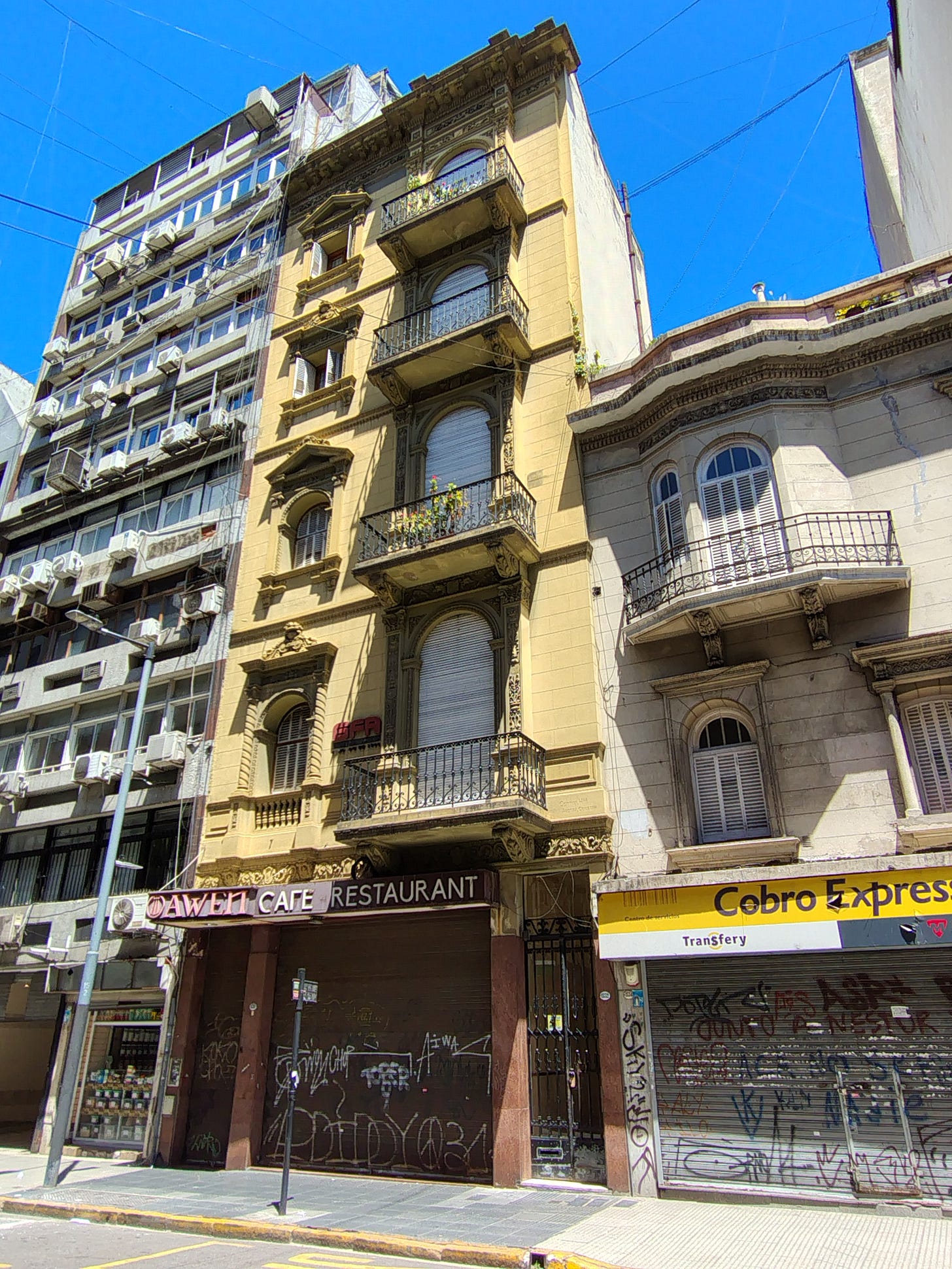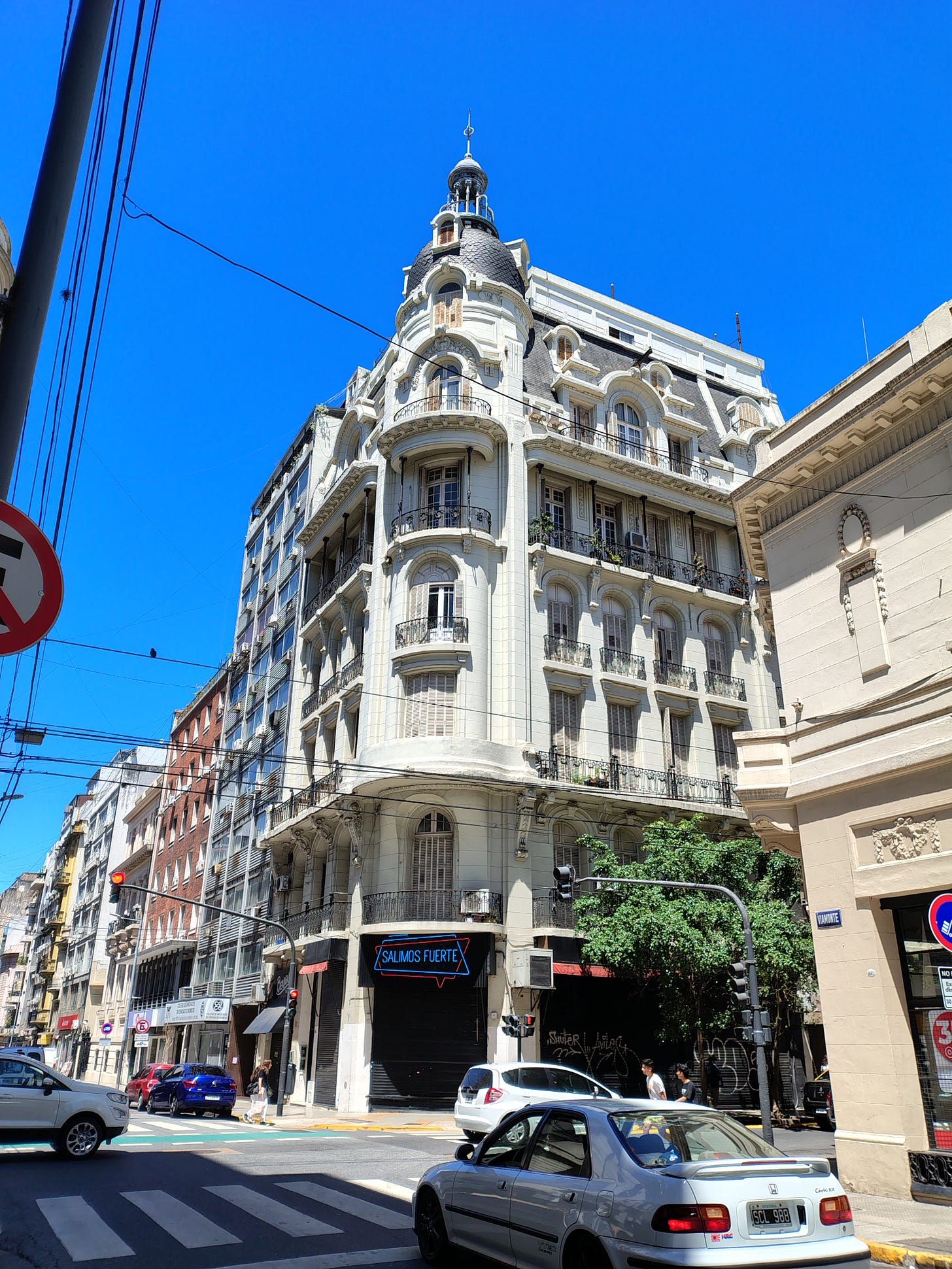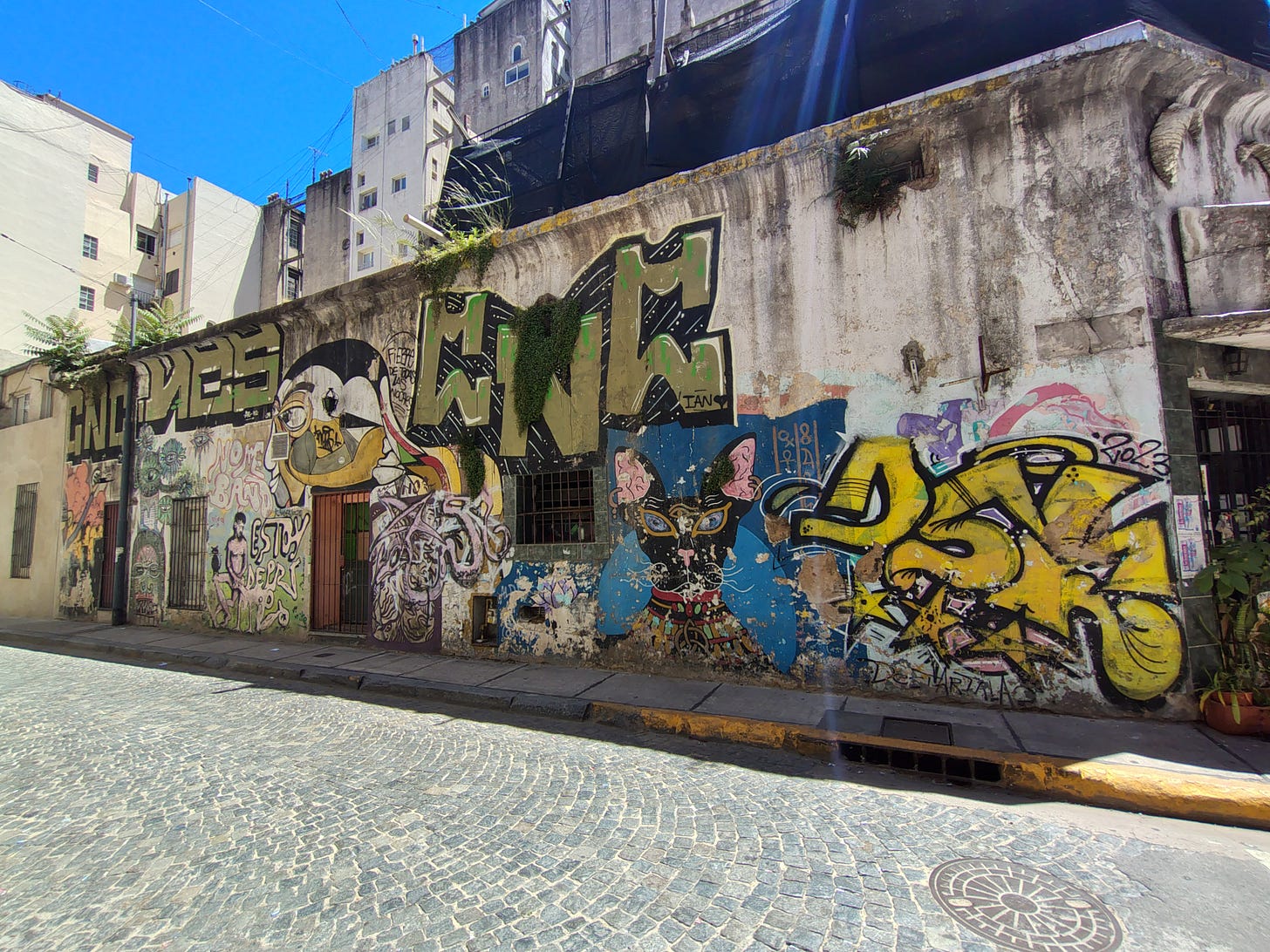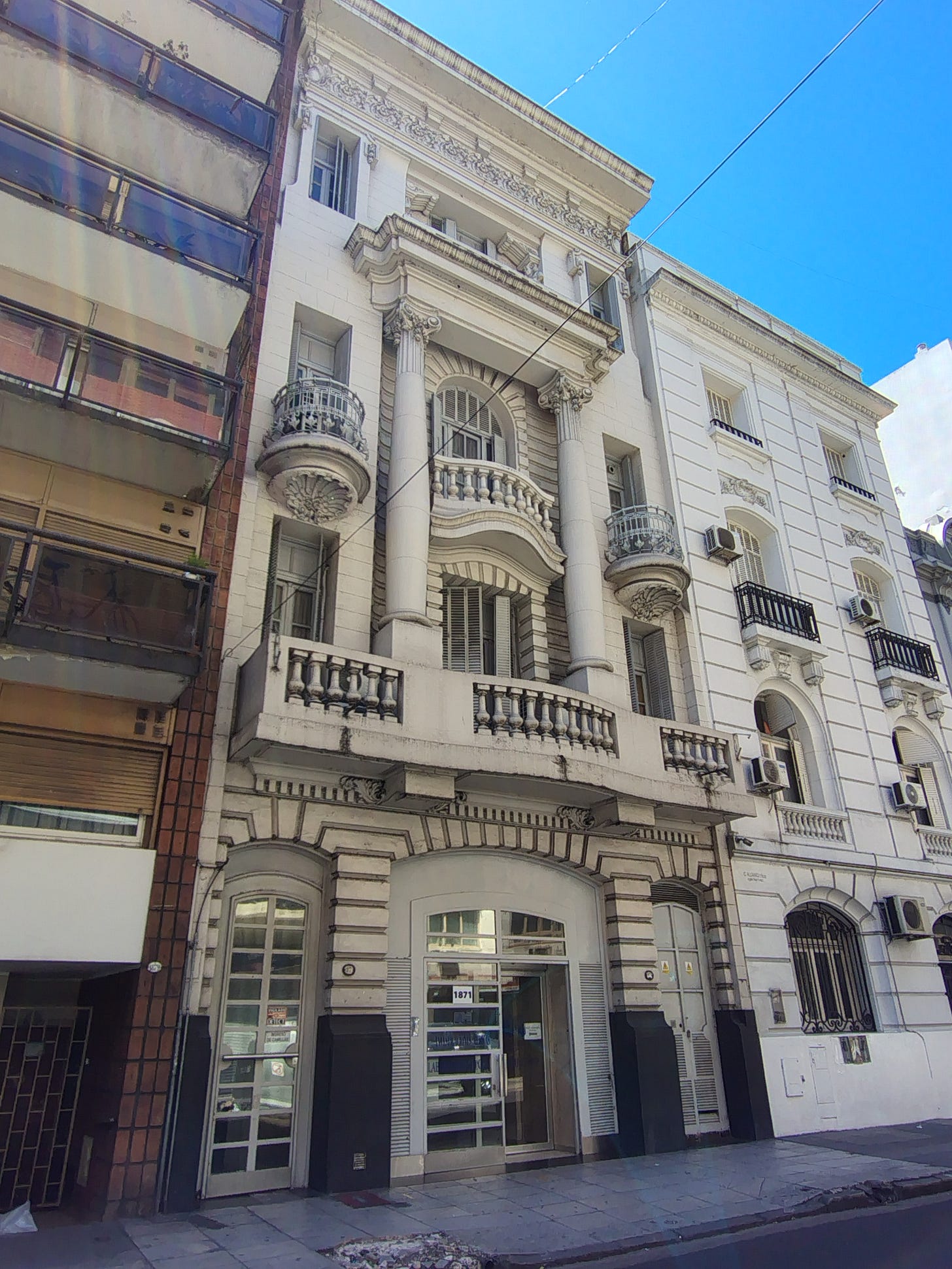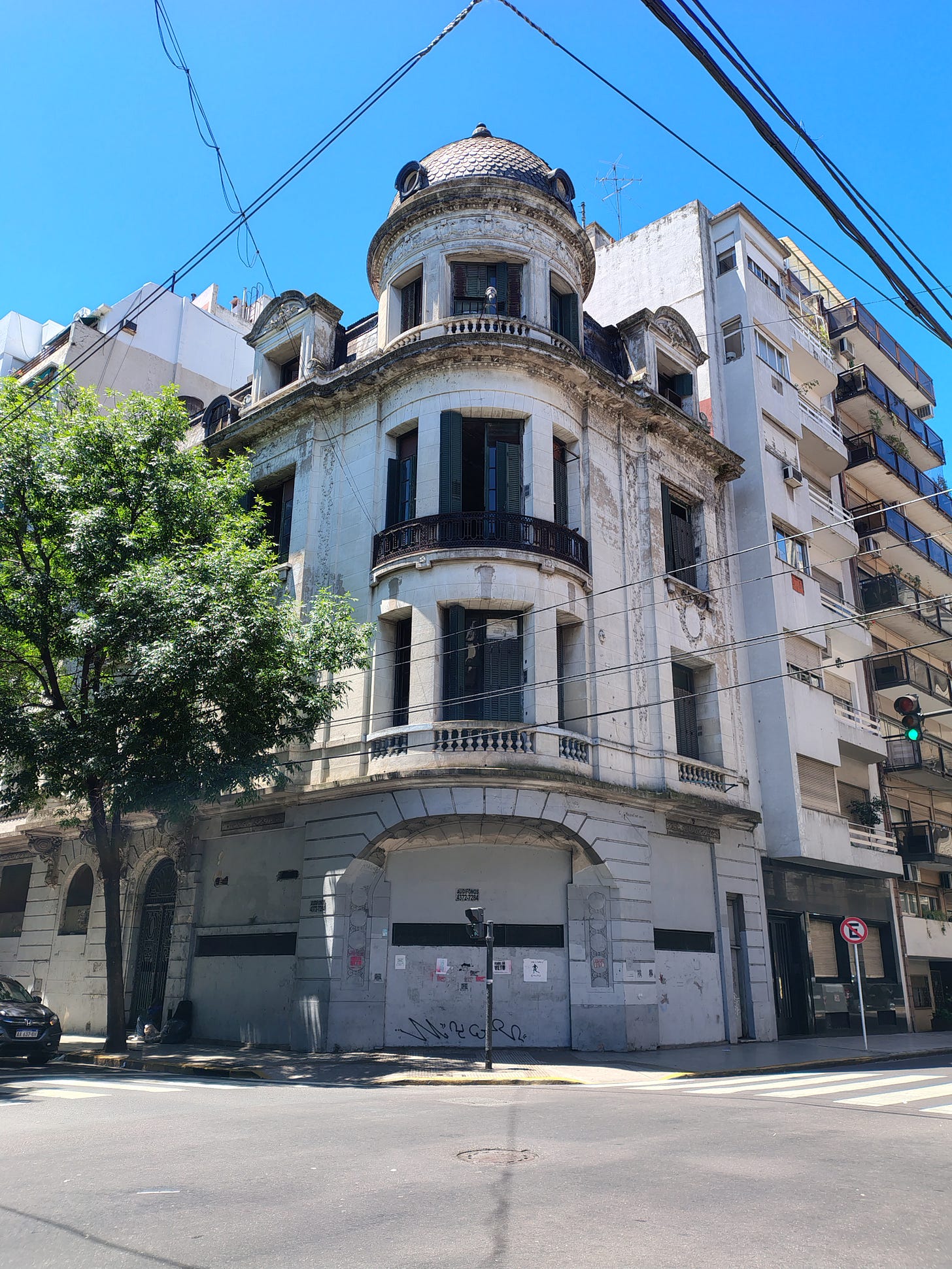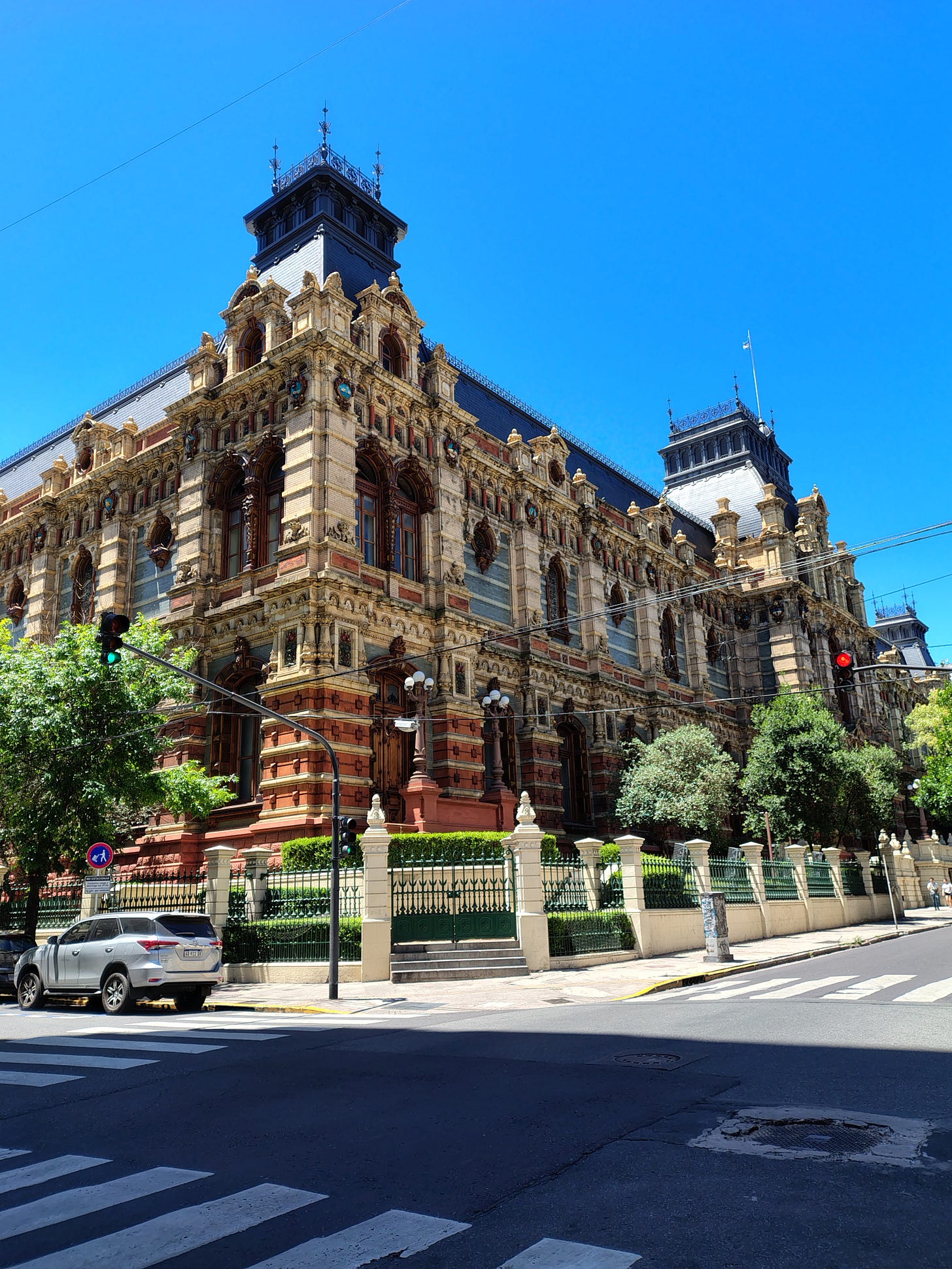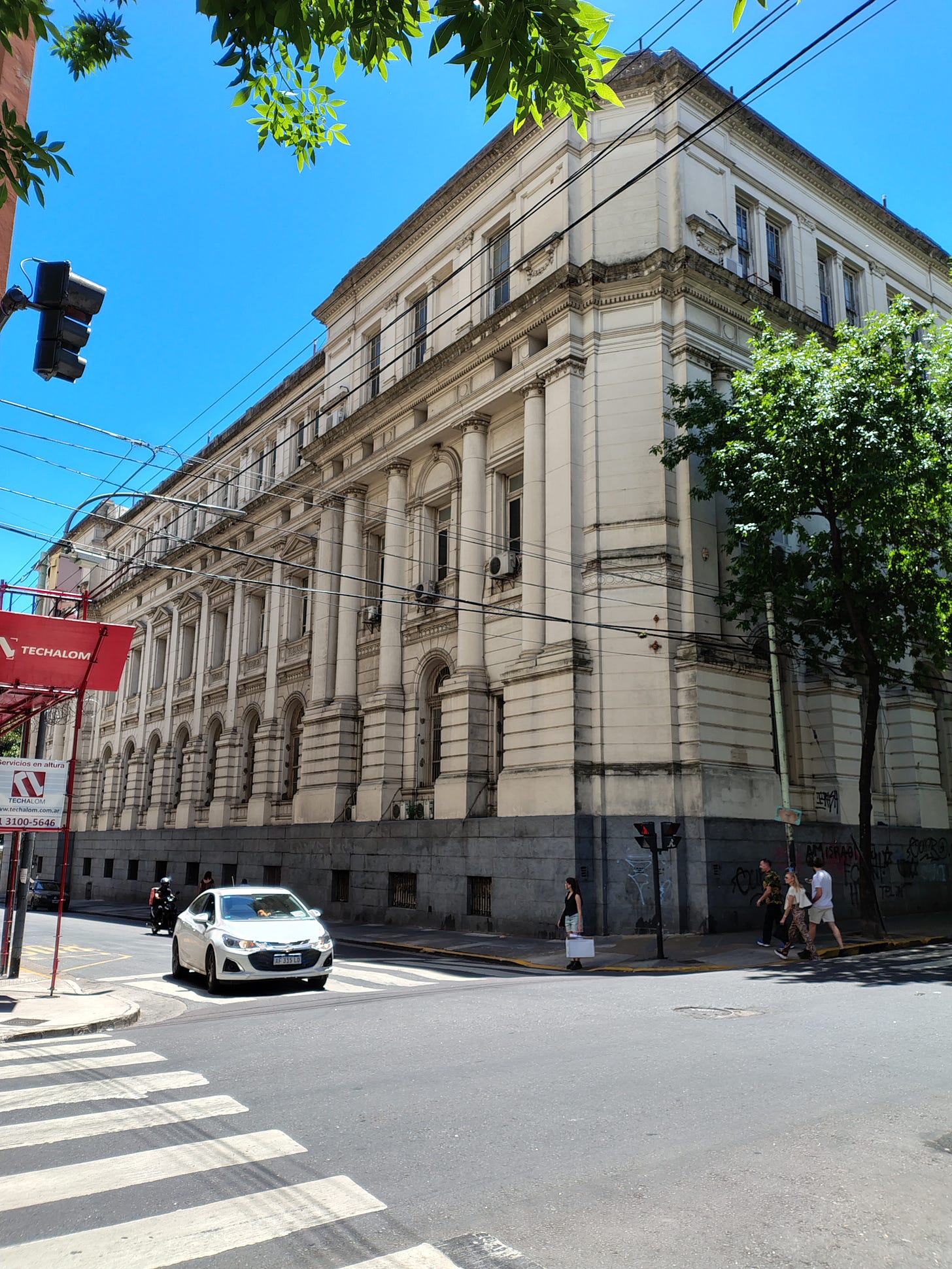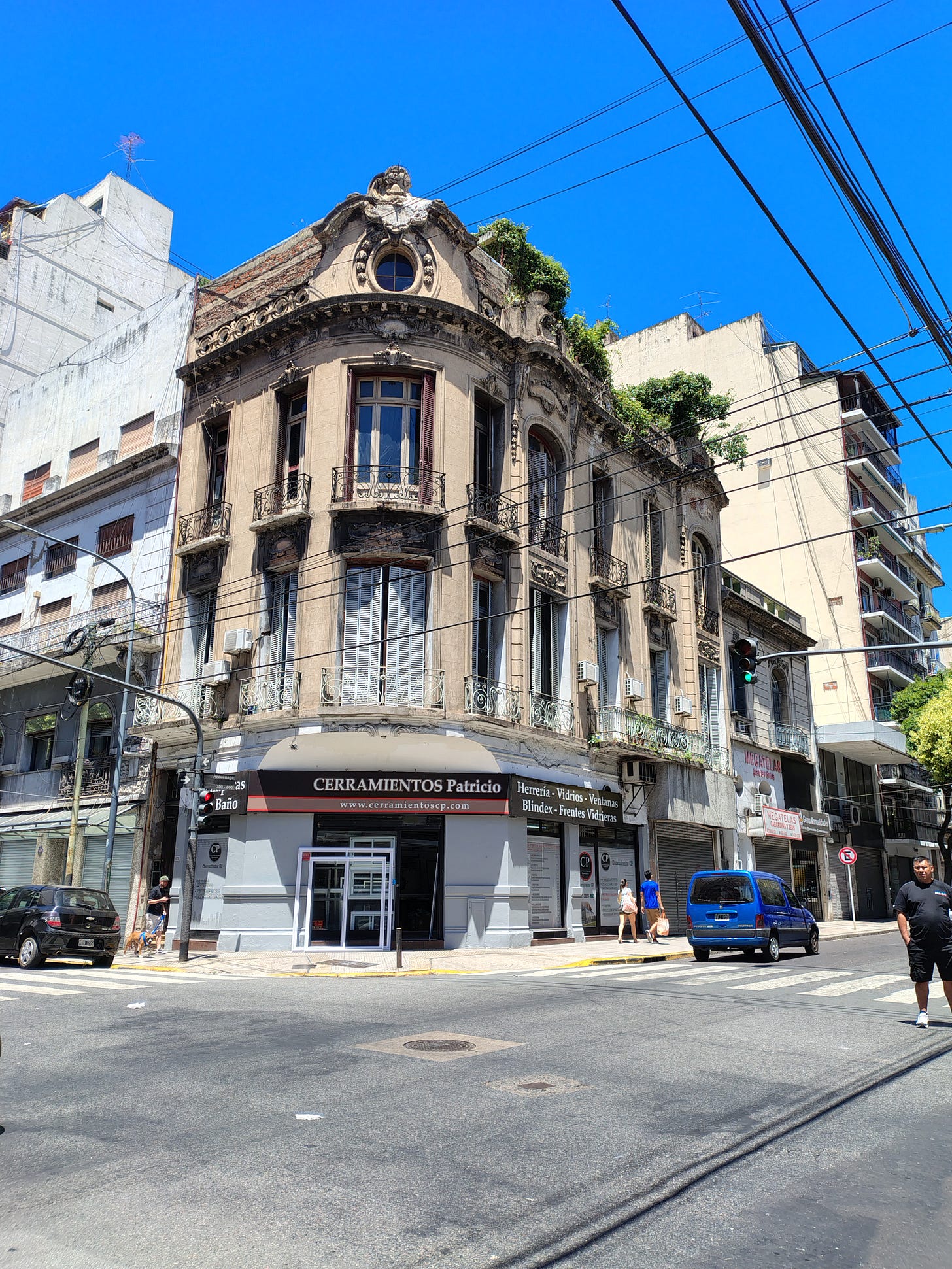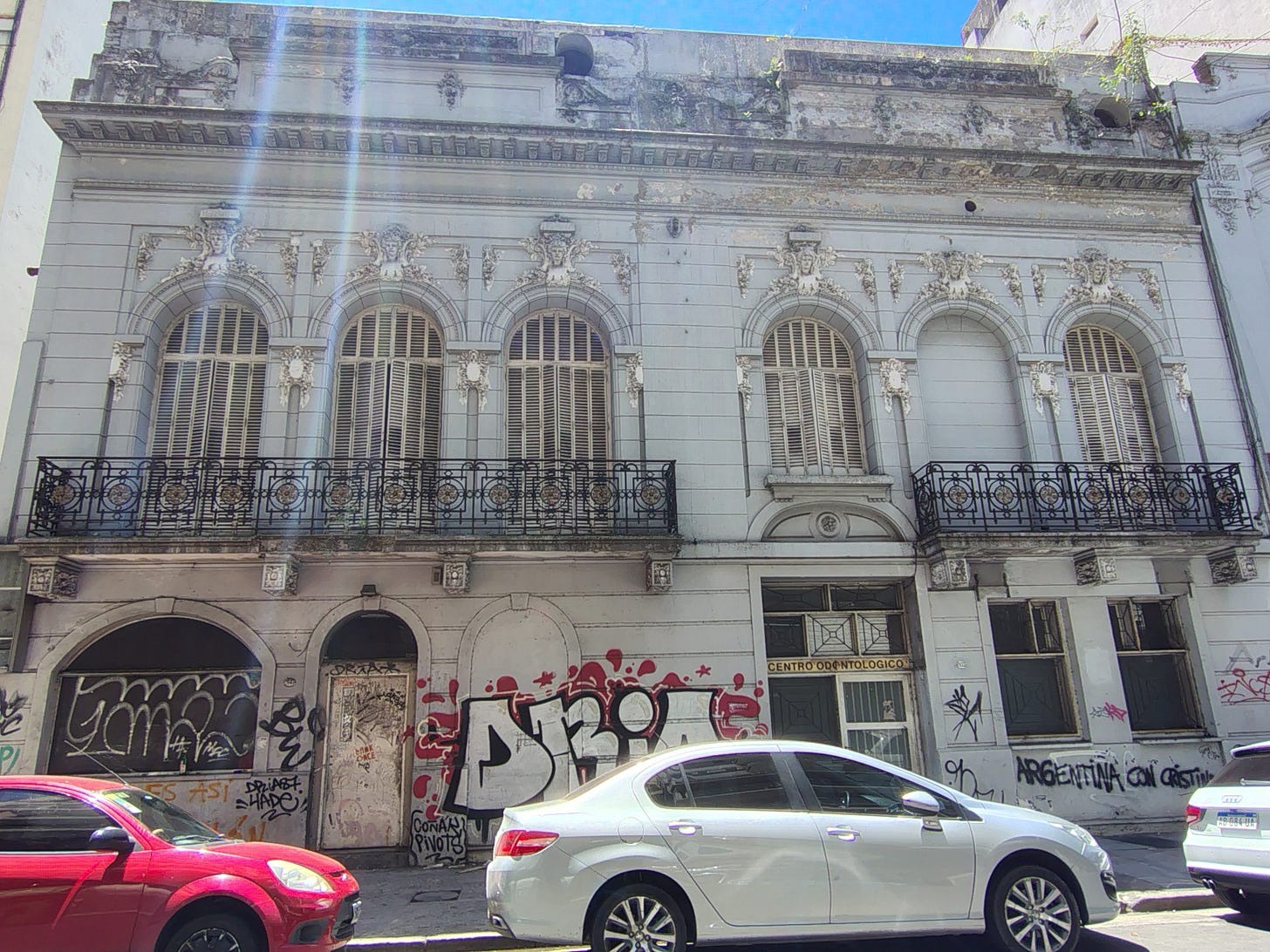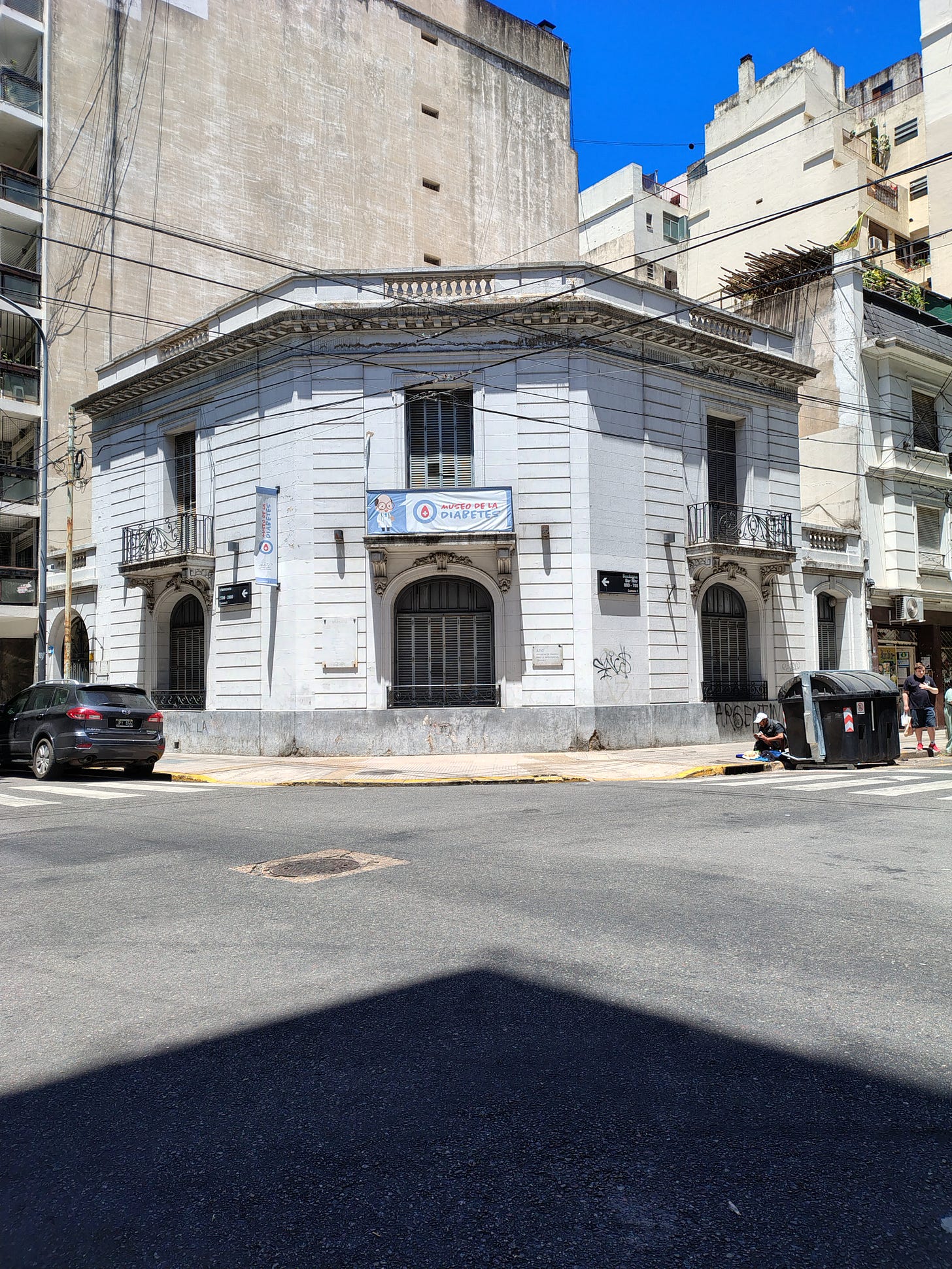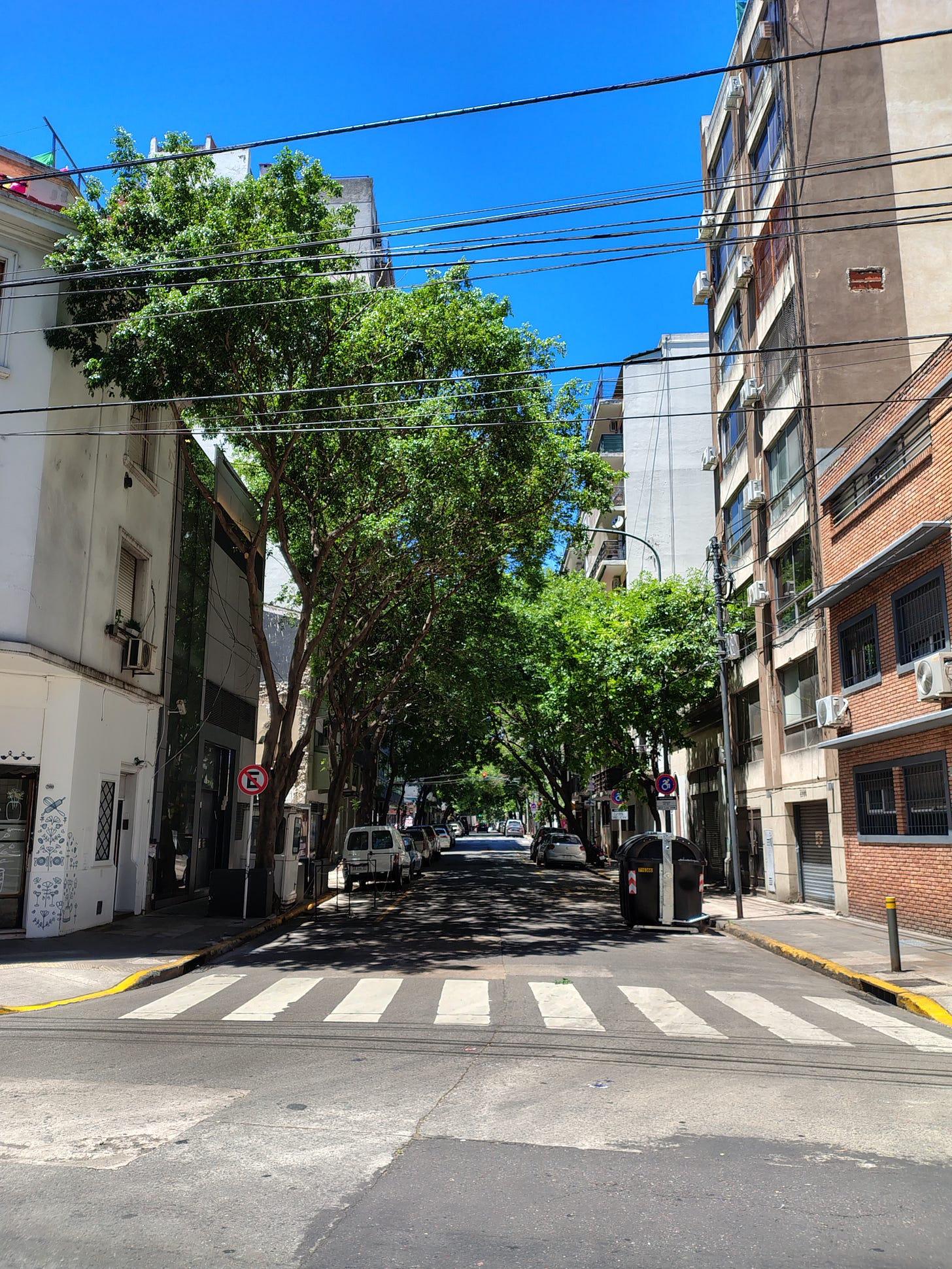Viamonte #2
In which I finish off the walk I started a couple of posts ago.
We’re back on calle Viamonte after taking a respite in Plaza Lavalle. Let’s get walking - we still have like eighteen blocks to go!
It’s just an opinion, but this building at the corner of Viamonte and Urug might be one of the ugliest buildings around. And while I haven’t tried it yet, and therefore maybe shouldn’t comment, the restaurant on the ground floor, Amor di Roma, doesn’t list anything remotely Roman on its menu, instead offering things like croissants, pain au chocolat, and a selection of pasta dishes, from scattered points around Italy, and around… nowhere in particular.
This one at 1532 just caught my eye for the details on the window frames, which you can zoom in to see. As far as I know, the café on the ground floor is now closed.
I just like buildings with cute domes, like this one at 1600, the corner of Montevideo. My friend Robert Wright once did a really cool writeup on domes in Buenos Aires.
A few steps further on is Pasaje Luis Dellepiane, a one block alley that used to house a great bar - appropriately named Dellepiane Bar, that offered really good burgers, a Philly cheesesteak, and live music. It was a real shame when this one closed. I would also say that back in the day, the graffiti on the wall was far better, and the alleyway was a lot cleaner. (First photo is then, second photo is now.)
Moving on…
At 1816 is the Universidad del Salvador’s Economic Sciences building at the corner of Avenida Callao. Not that interesting on its own, but this building was the former Intelligence headquarters for the military from 1968 until 1983, much of the latter part of that during the military dictatorship. Here, basically, is where they planned out the operations against their own citizens.
At 1871 another that I just like the look of. Originally designed by Italian architect Mario Palanti in 1901 as a petit hotel for the Azaretto family, it’s now a medical diagnostics center.
Just another dome at this building that looks semi-abandoned, at 1899, the corner of Riobamba.
The backside of the Palacio de los Aguas Corrientes (palace of the running waters), which is the water purification plant for the center of the city, hidden behind a façade that was intended to obscure what was going on behind the scenes. It appears that despite having toured the place more than once - there’s what is affectionally referred to as the “toilet museum”, which is an accurate though not complete description of the waterworks museum inside, as well as an art gallery (entered off the side, at Riobamba 750). It’s a highly impressive edifice.
The 2100 block is home to the Economics school for the University of Buenos Aires, and also houses the federal government’s forensics morgue and laboratory. What is it with economics schools on this walk?
A couple of buildings that were just interesting architecturally, but I don’t have much info on them. I know the second one was designed by architect Julián García Núñez, and has been granted historical protection by the government for its design.
An abandoned building at 2643 that used to be a dental clinic. Now that’s a building that would be pretty cool looking if someone bought it and fixed it up.
Not architecturally of note, but the Museo Casa Houssay at 2790. I’ve never seen it open, even during posted open hours. Bernardo Houssay was a physiologist who won a Nobel Prize in Medicine back in 1947. I’d also note that the sign on the building says it’s the Diabetes Museum, so I’m not sure what’s going on there.
And, this seems to be a good spot to end this walk. There were a few other buildings that were interesting to look at as I went, but nothing that seemed worth noting. This is a look back from the end of the 2900 block at the corner of Jean Jaures.



